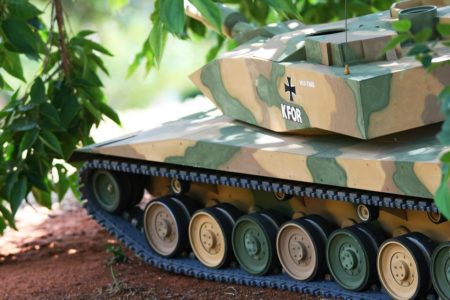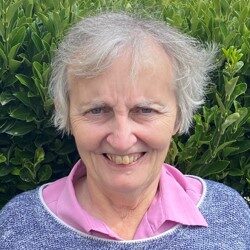Reconciliation After Seventy-Two Years
In our time, when senseless stabbings, murders, and other hateful acts are on the increase in Ireland, civil wars rage in Syria and Egypt, and various conflicts — often of a religious nature — disturb peace and tranquillity all over our globe, any story of reconciliation is good news. As Sisters of Mercy, we have no corner on being the compassionate presence of God in our world today, as the following story demonstrates. An unexpected turn of events in June 2013, led to a heart-warming symbolic reconciliation between unlikely parties in a remote village in western Russia.
World War II (1939 – 1945) was supposed to be the war to end all wars. It didn’t. People my age and older still remember some war stories, despite Ireland’s neutrality. I recall my father taking us outside one night to see the sinister orange-red glow that invaded our northern horizon over Sliabh an Iarainn. This was not a normal aurora borealis display. “Somewhere is getting pounded tonight,” he said. Next day The Press carried a story about the bomb dropped on Belfast.

One of my earliest memories as a three-year-old is Aunties Brigid and Margaret cutting short their visit to Gran and returning to England at night because a terrible “war” was coming. They could be killed, and Gran would never see them again.
My two older sisters and I played war games. We had our heroes — Hitler (mine), and the others, Churchill and Mussolini. Without any radio or TV, we followed the war progress daily in The Irish Press. I recall vivid headlines, “One hundred miles from Berlin, fifty miles from Berlin, Berlin falls.” I took it as a personal tragedy. I did not realize at the time that my Hitler was the main aggressor in the War. In school, I wrote an essay about “A Visit to a Bombed City (Berlin) after the War” and described with biblical eloquence how not a stone was left upon a stone.
Meanwhile, in the Rhineland of northern Germany, a seven-year-old boy, Arnold Angenendt, was preparing for First Communion. He remembers well the beautiful sunny day when Hitler escalated the war by invading Russia. The pastor instructing the first communicants told them, “God created every human being in God’s own image, and that includes the Russians.”

Image above of a German tank
This made a deep impression on Arnold’s young mind. He recalled it in June 2013, during a memorable visit to Juchnow, a small Russian village about 150 kilometres south-west of Moscow. His mission was threefold. First and foremost, he would return a 19th century icon of Christ to its hometown after 72 years of exile in Germany.
The icon of Christ the Pantocrator is not famous or of great monetary value in itself. It became infinitely more precious when it became known that it is the sole survivor of the village’s icons. All the others were destroyed during the war. Its richness lies in its historical and symbolic value as Juchnow’s only surviving icon.
![]()
Pastor Josef Perau (1910 – 2004), a German priest in the Russian Orthodox Christian Church, was sent to Russia as a military chaplain with the German troops. He and his comrades were quartered with a family in Juchnow. Perau never expected to find such strong faith in Bolshevik Russia. A great community spirit built up among the soldiers and their hosts, as they shared the same faith and prayed together daily before the family icon.
As the war front moved closer, the family had to vacate their home and flee for their safety. The woman of the house bade a touching, prayerful farewell to her beloved icon. She took it off the wall and presented it to chaplain Perau, saying, “Protect this icon. We cannot take it with us.” She and her family trudged out into the snow and disappeared in the night.
After the war, Josef Perau became President of the international students’ Augustinian College in Goch and pastor in Goch-Hulm. Later, he gave the icon to his student and priestly colleague, Arnold Angenendt, who became professor of church history on the Catholic Theological faculty of the University of Munster, a position he held until his recent retirement.
Arnold intended to present the icon eventually to the priests’ seminary in Munster, but after talking to a Russian theology student, Alexey Lynadup, in 2013, he became convinced that the icon should be returned to its original community in Russia. He believed this would be totally in accord with Perau’s wishes.
The Russian student established the necessary contacts and made the arrangements for the homecoming trip. Last June Professor Dr. Arnold Angenendt was invited to participate in the two-hour Russian Orthodox Church service in Juchnow, during which he presented the icon to the congregation.
The homecoming was a very touching moment both for the seventy-eight-year-old German priest and the local Russian people. Many were moved to tears. Arnold thanked the people for the honour of participating in their service. He recalled childhood memories of his First Communion coinciding with Hitler’s invasion of Russia. He apologised for the horrific war and suffering Germany had inflicted on the Russians. It was no ordinary war but a form of genocide, aimed at dehumanizing and annihilating the Slavic people. Twenty-seven million Russians lost their lives, and far more Russian prisoners of war died in German war camps than Germans did in Russian camps.
With the return of the icon, Arnold congratulated the people that the faith had once more returned to Russia. He prayed for God’s blessing on their church. He prayed God’s blessing on the reconciliation between Russia and Germany, which the icon’s return symbolised, and which he hoped would continue to grow.
The second gift Arnold brought the Juchnow community was something of a photographic restoration of the memories of their village and a record of its church and the religious life of the village dwellers before its destruction in the war. Arnold reproduced and enlarged some unique photos which he found pasted to the back of the icon. Presumably, they are the only surviving pictures of the village before 1942. Older people in the congregation recognized some of their relatives and their houses. One woman recognized her grandmother.
All of this was very rewarding for Arnold and convinced him of the rightness of his visitation. As a further gesture of reconciliation and solidarity, he added a personal gift. Some months previously, a church in Munster, where he normally helps out with services, gave him a gift of money to celebrate fifty years of his priestly ministry. In addition to handing over the icon to its rightful owners, Arnold presented his jubilee money as his own personal goodwill gift to his newly found fellow Christians in the church of Juchnow.
The twelve-year-old who imagined a visit to the bombed city of Berlin eventually realized her wish. The Wall and its heavily armed dour-faced guards were no more inviting than the sniffer dogs that inspected our tourist bus and its curious occupants. While the West had made a good post-war recovery, the East was poverty-stricken, desolate, and a sad mass of ruins.
Thanks to Arnold Angenendt, I had a more recent opportunity to witness the resurrected East that now rivals its western counterpart in prosperity and modernity. Had I not experienced some of the destructive war remains earlier, I could never have appreciated the revival, following the German re-unification. Check Point Charlie is now no more than a photo op for tourists. The guards, fewer in number now, actually smile and proudly welcome tourists aboard their pleasure boats on the Spree.
Arnold spent his first year as a young professor at the Medieval Institute in Toronto. He was closer in age to older graduate students in theology than to his professor colleagues, so a group of us befriended him and included him in our social events. He never forgot this. One of his recent favours to us was a friendship renewal of the Toronto group in the new Berlin. We joked about this international Berlin Summit. I was the neutral party in this symbolic reconciliation between Germany and the US segment of the Allied Forces. Meanwhile, the reunited Berlin continues to work out its own reconciliation under Mama Merkel, who keeps the EU on its toes.
Carmel McEnroy rsm
Western Province


